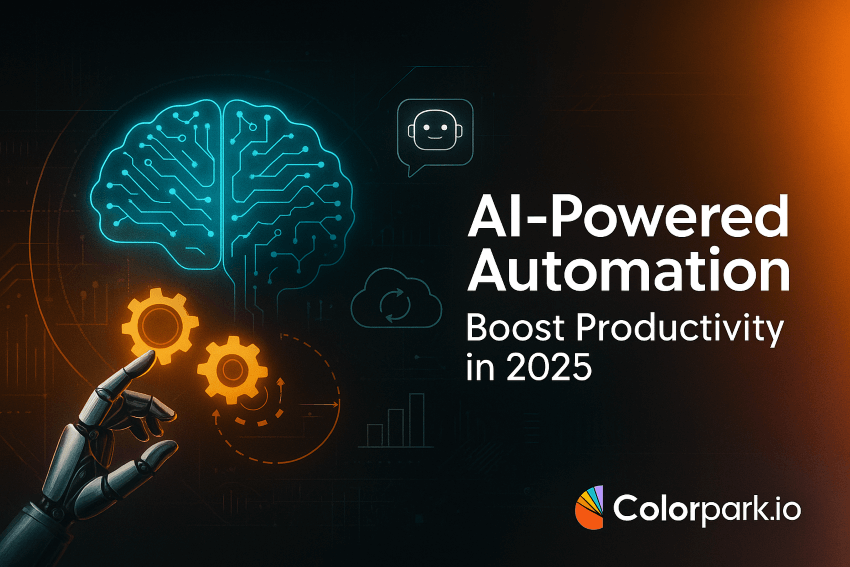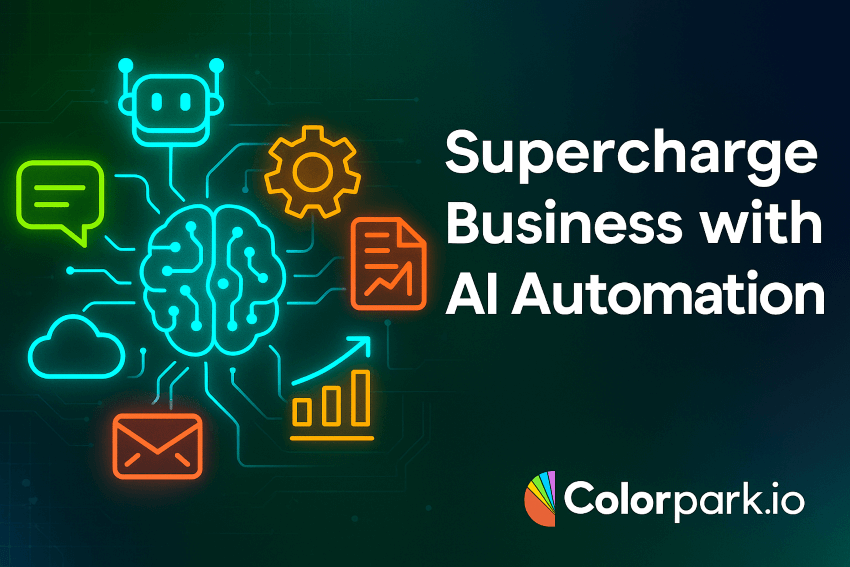Introduction
In 2025, artificial intelligence isn’t just a buzzword — it’s the backbone of how modern companies operate. Whether you’re a small startup or an enterprise powerhouse, the right AI tools can automate time-consuming tasks, reduce operational costs, and unlock new levels of productivity.
But here’s the challenge: with so many AI options, it’s easy to get overwhelmed and miss out on the real benefits. This article cuts through the noise. We’ll show you exactly how to use AI to supercharge your business automation and productivity — with actionable insights you can apply today.
H2: Why AI is the Productivity Engine of 2025
AI has moved beyond pilot projects into mission-critical operations. From automating invoices to analyzing customer sentiment in real time, companies that adopt AI early see measurable performance gains.
H3: Market Proof — AI Drives Measurable Results
- McKinsey research shows AI adopters achieve 20–30% cost reductions.
- Gartner predicts 80% of enterprises will have integrated AI into core operations by 2026.
- Startups using AI grow faster thanks to leaner processes and smarter decision-making.
H2: Key Areas Where AI Boosts Business Automation
H3: 1. Workflow Automation
AI tools like Zapier, Make, and Microsoft Power Automate integrate multiple apps, triggering actions automatically — saving hours weekly.
H3: 2. Customer Support & Chatbots
ChatGPT-powered bots can handle FAQs, process orders, and escalate complex issues, freeing human agents for high-value tasks.
H3: 3. Marketing & Content Creation
From writing blog posts to generating ad creatives, AI enables marketing teams to scale output without extra headcount.
H3: 4. Sales Enablement
AI scoring systems identify hot leads, forecast sales, and recommend next steps, helping reps close more deals faster.
H3: 5. Operations & Supply Chain
Predictive analytics help forecast demand, reduce inventory waste, and automate procurement workflows.
H2: How to Implement AI Without Overwhelm
H3: Step 1 – Audit Your Current Processes
Identify repetitive, rule-based tasks first. List where human effort is highest but decision complexity is low.
H3: Step 2 – Start Small with High-Impact Areas
Focus on one department or process. A quick win builds confidence and internal support.
H3: Step 3 – Choose the Right AI Tools
- Look for integrations with your existing software.
- Check compliance and security credentials.
- Ask about transparent pricing and support.
H3: Step 4 – Train Your Team
Even the best AI fails without adoption. Offer hands-on training sessions and clear documentation.
H3: Step 5 – Measure & Optimize Continuously
Track KPIs such as time saved, cost reduced, and productivity gains to fine-tune your AI strategy.
H2: Overcoming Common Objections
H3: “AI Will Replace Jobs”
In reality, AI augments your workforce. Employees spend less time on drudgery and more on strategic work.
H3: “AI is Too Expensive”
Many AI tools offer affordable SaaS pricing. Start small and scale as ROI is proven.
H3: “Security Concerns”
Reputable AI vendors comply with strict data protection standards like GDPR and SOC 2.
H2: Examples of AI Supercharging Productivity
- Case Study 1: A mid-size e-commerce store automates product descriptions with AI and cuts copywriting time by 80%.
- Case Study 2: A logistics company uses predictive analytics to reduce delivery delays by 30%.
- Case Study 3: A SaaS startup integrates AI chatbots, reducing support tickets handled by humans by 60%.
H2: The Future of AI in Business Automation
By 2025 and beyond, expect AI to become even more predictive, context-aware, and industry-specific. Companies that invest now will be future-proofed against disruption.
Bullet Points / Quick Takeaways
- Automate first, optimize later — don’t wait for perfect conditions.
- Focus on high-impact areas like customer service, marketing, and ops.
- Train your team so adoption sticks.
- Measure ROI continuously to justify scaling AI investments.
- Stay updated — AI tools evolve rapidly, and so should your strategy.
Call to Action (CTA)
Ready to make your workflows faster, leaner, and more profitable? Start exploring AI-powered automation tools today — or contact our team for a personalized strategy session. click here
Optional FAQ Section
Q: What’s the easiest way to start using AI in my business? Begin with a simple use case like automating email responses or social media posts, then scale as you see ROI.
Q: How much does AI integration cost? Costs range from free tools to enterprise platforms. The key is starting small and proving ROI before scaling.
Q: Is AI safe for handling sensitive data? Yes — if you choose reputable vendors with strong encryption and compliance certifications.
Tone & Style Recap
- Conversational yet authoritative
- Examples and data to build trust
- Skimmable subheads, bullet points, and actionable takeaways
- SEO-rich without stuffing



